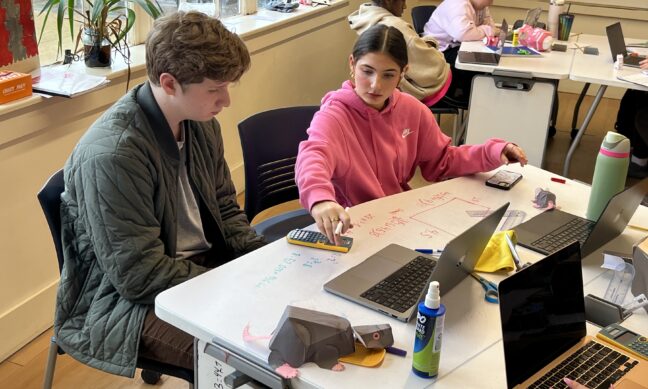Class: Integrated Math 3: Algebra, Geometry, and Data Science
Grade: Upper School
Teacher: Melinda Ching
Math 3 students leveraged their understanding of similarity, trigonometry, conic sections, and calculating area in order to transform pieces of paper into complex 3D pop-up toys. The project challenged students to get creative not only in selecting a colorful toy to create, but also in combining several concepts and equations to finish their creations.

From a llama to a Nintendo Switch to a rat, each student (or pair of students) chose a design different from their peers. This allowed every student to have a unique set of shapes and curves to analyze, making each project unique to the student.
A large challenge students faced was calculating the area of the many curved sides of their toys. The surface area and volume of each toy needed to be calculated, meaning every surface, edge, and side had to be accounted for. As teacher Melinda Ching states, “students had to use their knowledge of composite area to break up irregular shapes into multiple shapes that they could find the area of.”
The first thing we did was pick out what [pop-up toy] we want to make. Then we had to build it and find the surface area and volume. Finding the surface area is very tedious- you have to do it for every side or split it into shapes you can easily calculate
-Hannah Rothman ’26

Each toy allowed students to track their progress and success in real time. The more accurate their calculations, the easier it became to assemble the toys into their three-dimensional forms. Once completed, the complex shapes and features of each design stood to represent the immense amount of math and problem-solving students had completed.
My hope [with this project] is that students were able to see the complexity of the problem and then take a step back to break the problem down into more manageable, bite-size chunks to complete their calculations. I also just wanted them to have fun and create something three-dimensional from a plain two dimensional piece of paper. I liked this project because it’s quite a rigorous task and assesses students’ ability to apply multiple concepts of what we learned throughout the entire term.
-Melinda Ching, Upper School Math

